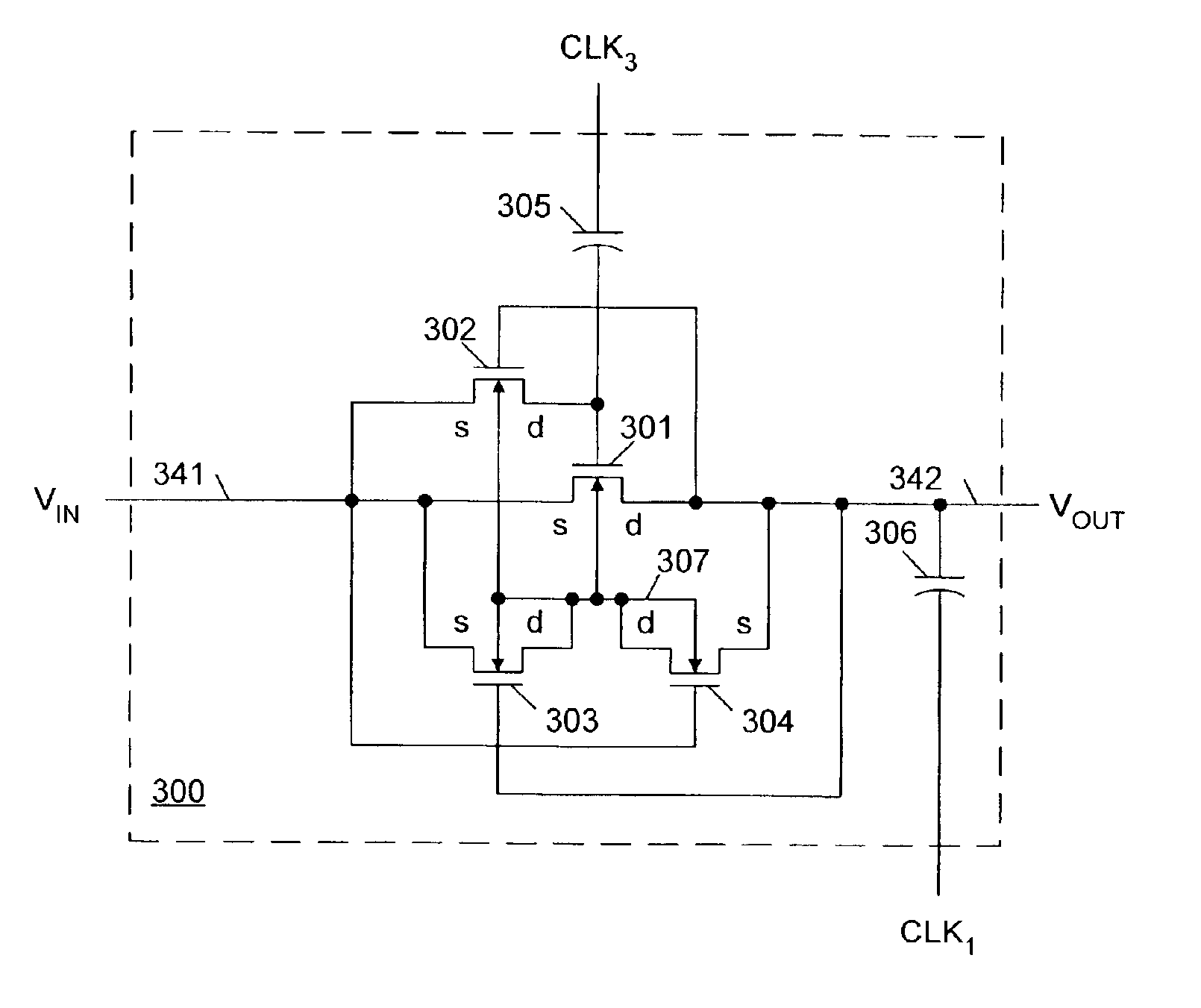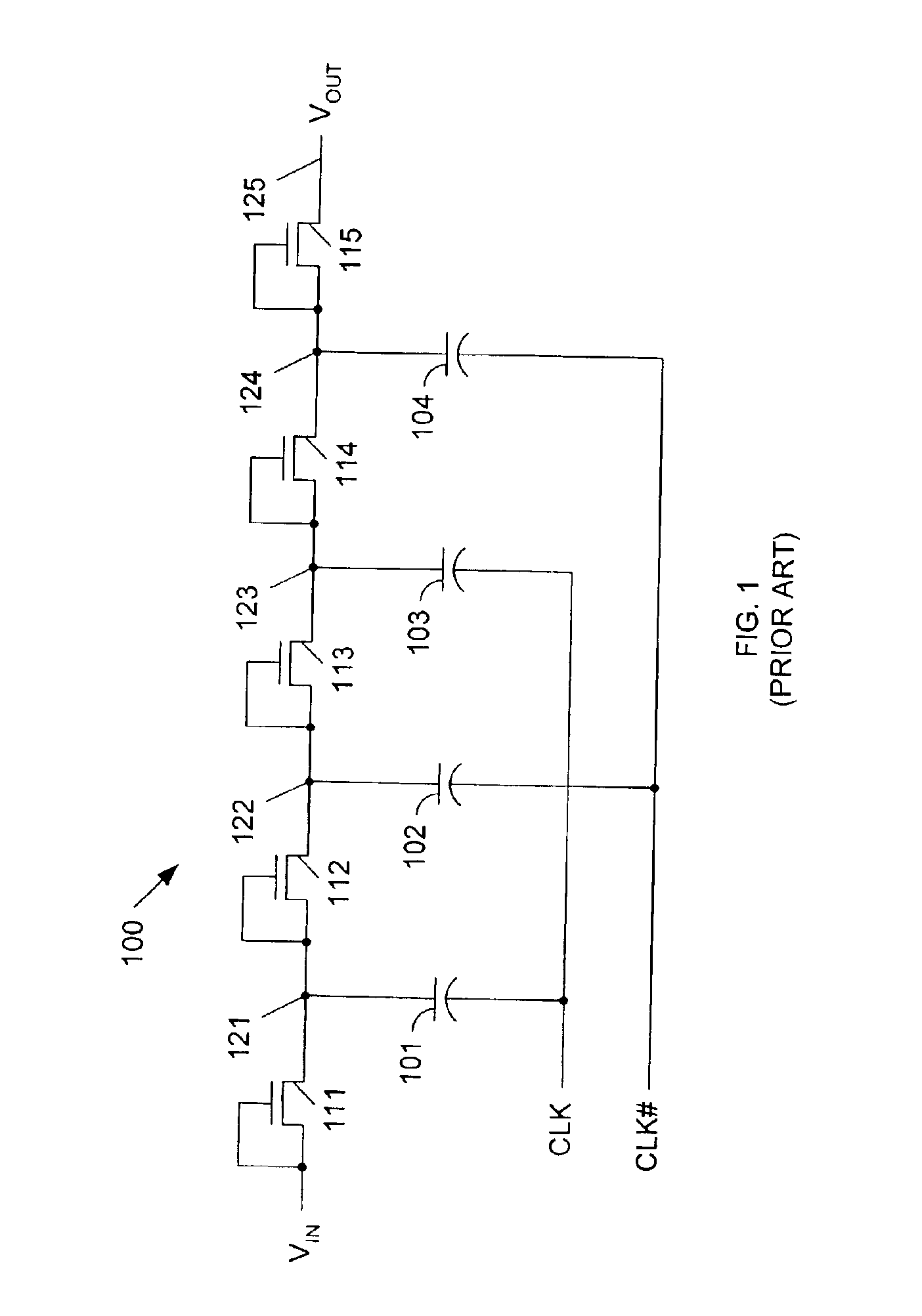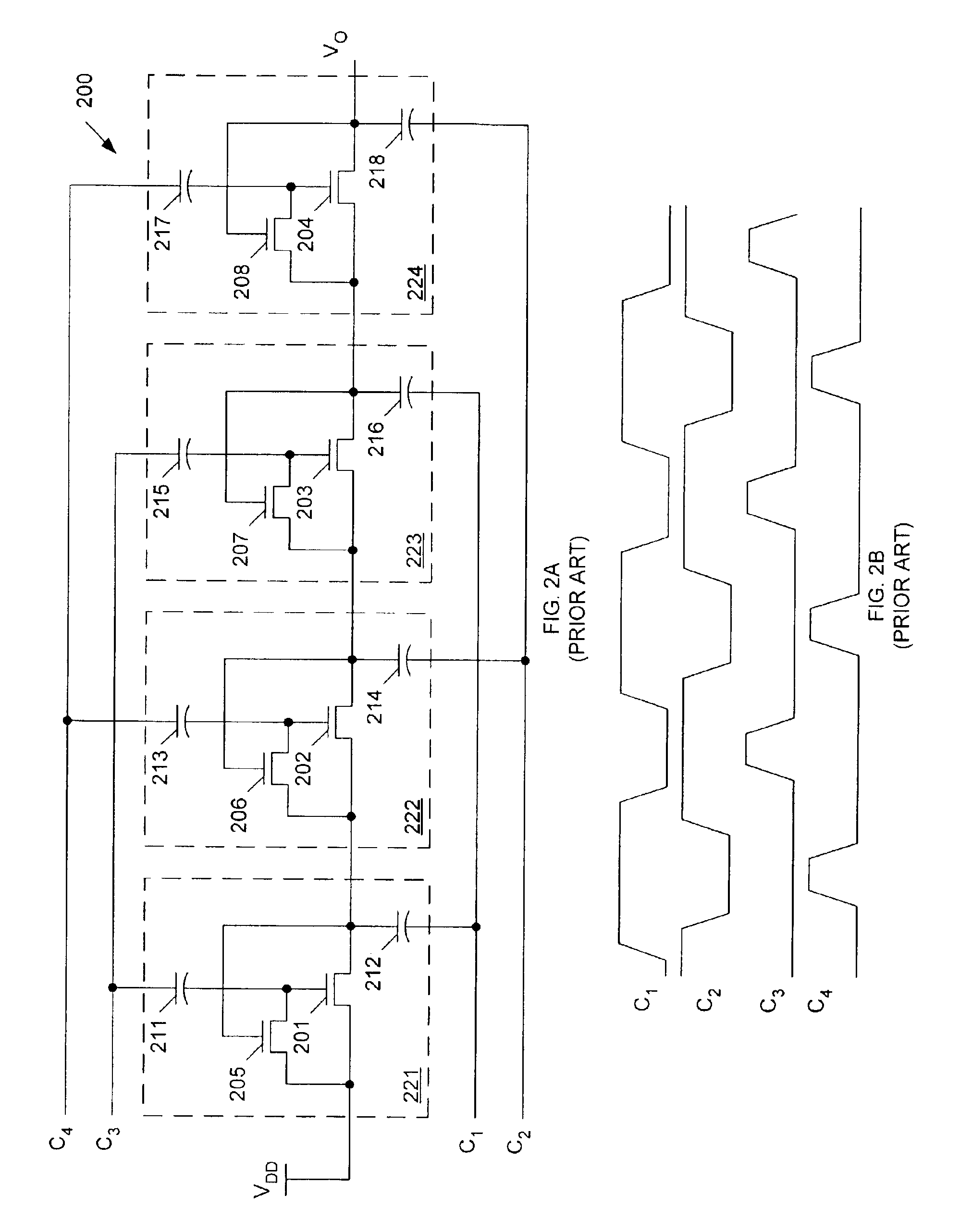Triple-well charge pump stage with no threshold voltage back-bias effect
a charge pump and threshold voltage technology, applied in the direction of electric variable regulation, process and machine control, instruments, etc., can solve the problems of large back-bias voltage, large back-bias voltage, and significant efficiency loss, and achieve the effect of undetectable threshold voltages of associated transistors and large back-bias voltages
- Summary
- Abstract
- Description
- Claims
- Application Information
AI Technical Summary
Benefits of technology
Problems solved by technology
Method used
Image
Examples
Embodiment Construction
FIG. 3 is a circuit diagram of a charge pump stage 300 in accordance with one embodiment of the present invention. Charge pump stage 300 includes n-channel MOS transistors 301-304, capacitors 305-306, input terminal 341 and output terminal 342. N-channel transistors 301-304 are fabricated in a p-well region 307. In the described embodiment, charge pump stage 300 is fabricated using a triple well process, wherein p-well region 307 is fabricated in a surrounding n-well region (not shown). The n-well region is located in a p-type substrate (not shown).
Because a triple-well process is typically used to fabricate EEPROM cells, charge pump stage 300 can be fabricated on the same chip as EEPROM cells without requiring process modifications. Charge pump stage 300 can then be used to generate the voltages required to operate the EEPROM cells.
N-channel transistor 301 is connected in series between input terminal 341 and output terminal 342. More specifically, the source of n-channel transisto...
PUM
 Login to View More
Login to View More Abstract
Description
Claims
Application Information
 Login to View More
Login to View More - R&D
- Intellectual Property
- Life Sciences
- Materials
- Tech Scout
- Unparalleled Data Quality
- Higher Quality Content
- 60% Fewer Hallucinations
Browse by: Latest US Patents, China's latest patents, Technical Efficacy Thesaurus, Application Domain, Technology Topic, Popular Technical Reports.
© 2025 PatSnap. All rights reserved.Legal|Privacy policy|Modern Slavery Act Transparency Statement|Sitemap|About US| Contact US: help@patsnap.com



